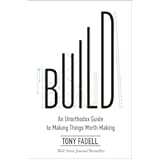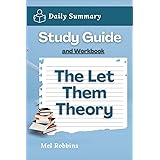Unlocking True Wealth: Beyond Riches and Redefining Financial Security
Do you often find yourself pondering the true meaning of wealth, or perhaps struggling with the discomfort that frequently accompanies discussions about money? For many, the journey from merely surviving to genuinely thriving financially can seem like an uphill battle, fraught with uncertainty and self-doubt. The video above, featuring insights from renowned experts like Scott Galloway, Cody Sanchez, and Jaspreet Singh, delves into the nuances of building lasting financial security and cultivating a healthier relationship with money.
This deep dive explores how a strategic approach to finances can transform your economic outlook, moving beyond the superficial allure of “riches” to embrace the profound stability of true wealth. It becomes clear that building wealth is a process that is deliberate, educational, and deeply personal, emphasizing that financial transformation is possible for anyone willing to engage with the right strategies and mindset.
1. Redefining Wealth: The Distinction Between Riches and True Economic Security
A crucial step in achieving financial well-being is understanding the fundamental difference between being “rich” and being “wealthy.” As Scott Galloway eloquently points out in the video, riches often represent what is seen—the lavish homes, expensive cars, and opulent lifestyles. However, true wealth, or economic security, is often unseen and is defined by having passive income that consistently exceeds one’s expenses. This crucial distinction helps shift the focus from accumulating material possessions to building a sustainable financial foundation.
An illustrative example shared is that of an M&A executive earning between $3 million and $10 million annually, yet experiencing sleepless nights due to high expenses and minimal savings. Conversely, Mr. Galloway’s 94-year-old father, with a modest passive income of $52,000 a year from his Royal Navy pension, Social Security, and six coin-operated washer-dryer machines, is considered wealthy because his spending is a manageable $48,000, allowing for savings. This highlights that it is not solely about how much income is generated, but rather how much is saved and how effectively passive income streams are established relative to one’s expenditures. The core objective is to put oneself on a path where passive income consistently surpasses the “burn rate.”
2. Rewiring Your Relationship with Money: Overcoming Financial Stress and Taboos
For many, conversations about money are inherently stressful, often evoking feelings of anxiety, guilt, or inadequacy. This apprehension frequently stems from upbringing or past financial struggles. The video emphasizes that a significant portion of the population carries an unhealthy, stress-filled relationship with money, which can impede growth and decision-making.
2.1 Enhancing Financial Literacy
One of the most effective interventions suggested for mental un-wellness around money is enhancing financial literacy. It is believed that basic financial education, such as understanding credit card interest rates, should be a standard part of curricula, perhaps through a “class called ‘Adulting'” in high school. This foundational knowledge empowers individuals to make informed decisions from an early age, preventing common pitfalls and fostering confidence.
2.2 Fostering Open Dialogue
Another powerful strategy is to break the societal taboo surrounding money by encouraging open conversations with friends and partners. Men, in particular, often face societal pressure to appear economically vital, leading to reluctance in discussing financial struggles or investments openly. However, just as a professional athlete discusses their sport constantly, individuals aspiring for financial success are encouraged to discuss investments, savings, taxation, and spending habits with their peers. This vulnerability can lead to shared learning, new insights, and a stronger collective journey towards financial security.
2.3 Gamifying Savings and Building Alignment
Gamifying the saving process, especially with a romantic partner, can transform a daunting task into an engaging and rewarding shared goal. By setting clear targets and tracking progress transparently, couples can build economic security together. This collaborative approach fosters alignment and mutual support, helping to prevent the financial stress that often contributes to relationship strain. For instance, data suggests that over two-thirds of divorce filings originate from women, with financial stress frequently being a significant incendiary factor in relationship breakdowns. Building shared financial goals can alleviate this pressure and strengthen partnerships.
3. Translating Skills into Sustainable Wealth: The Modern Career Landscape
The traditional path of college degrees guaranteeing financial success is increasingly being questioned. In today’s dynamic job market, practical, transferable skills are often valued above conventional academic credentials. Cody Sanchez highlights that top institutions and companies, such as Google, are beginning to bypass degree mandates for certain roles, especially in engineering, focusing instead on demonstrated ability.
3.1 From “What You Learned” to “What You Did”
The “resume of the future” prioritizes actionable results over theoretical knowledge. Employers are less interested in academic case studies and more in concrete achievements. For example, rather than hiring a Wharton graduate who has theoretically studied market growth, a business owner would prefer someone who can demonstrate past success in growing revenue for a beverage company. This shift liberates individuals from the “six-figure barrier” of traditional education, making success more accessible based on merit and demonstrable expertise.
3.2 Expertise to Equity: Negotiating for Ownership
For those feeling stuck or “unemployable” in a traditional sense, leveraging one’s skills to negotiate for equity in a business presents a powerful wealth-building strategy. This “expertise to equity” model allows individuals to become solutions to business problems—whether it’s increasing revenue, cutting costs, or decreasing pain points—and, in return, gain ownership and upside in the business. This approach minimizes personal financial risk, as it doesn’t always require upfront capital investment or the high failure rates associated with starting one’s own business (where 90% of startups fail within a 10-year period, and the average entrepreneur earns $46,000 annually after three years of making $0).
4. The Wealth Formula: Income, Expenses, Investments, and Savings
Jaspreet Singh introduces a structured “wealth formula” that simplifies the path to financial security: Income – Expenses = Investments + Savings. This formula underscores that wealth building is not just about earning more, but crucially about managing expenses and consistently allocating funds to both savings and investments. The video also clarifies that investments are not merely for building wealth but are paramount for *maintaining* it, even after significant initial gains have been achieved.
4.1 The Power of Consistent Investment
Many individuals believe they do not have enough capital to begin investing, echoing Jay Shetty’s own initial thought about having only $1,000 post-monastery. However, the expert advice challenges this notion, stating that investment can begin with very small amounts, even as little as $10, as Jaspreet Singh did with Ford stock decades ago when it was trading at $2 a share. The true power lies in consistency and automation. By automatically investing a portion of every paycheck, individuals can leverage the power of compounding over time.
4.2 Smart Investment Vehicles for Long-Term Growth
For those new to investing or preferring a less hands-on approach, exchange-traded funds (ETFs) such as those tracking the S&P 500 are highly recommended. An S&P 500 ETF provides exposure to 500 of the biggest companies in America, effectively allowing one to invest in the broader American economy with a single transaction. This passive strategy, maintained consistently regardless of market fluctuations, has been shown to build significant wealth. Historical data indicates that even janitors and school workers, making modest incomes, have retired with over $1 million by consistently investing small amounts over decades. A few hundred dollars invested monthly from age 21 to 65, earning an average rate of return, can realistically accumulate into millions.
4.3 Growing the “Pie”: The Mindset Shift
While pinching pennies can help, true wealth accumulation often comes from growing one’s income, or “the pie.” Instead of solely focusing on saving a larger percentage of a limited income, a wealth-building mindset involves actively seeking ways to increase earnings, for example, moving from $40,000 to $400,000 annually. This necessitates a “minority mindset” – a willingness to learn, adapt, and seek out new opportunities. Investing in oneself through education, skill development, and networking is the best investment for generating higher returns. Once income grows, the financial education gained ensures that this additional money is strategically invested in assets rather than immediately spent on depreciating liabilities.
Building true financial security is a journey of continuous learning, disciplined action, and a profound shift in one’s money mindset. It requires prioritizing long-term wealth over short-term gratification and understanding that economic independence is meticulously built through strategic decisions and consistent effort. By embracing these principles, a path toward lasting financial freedom can be forged.






